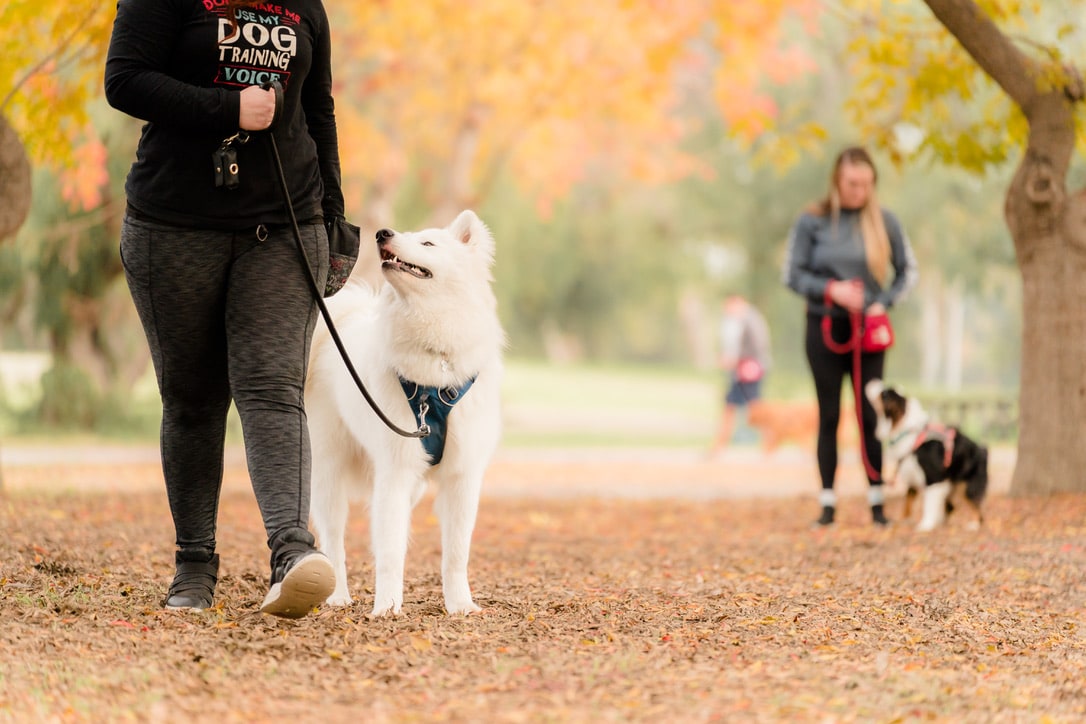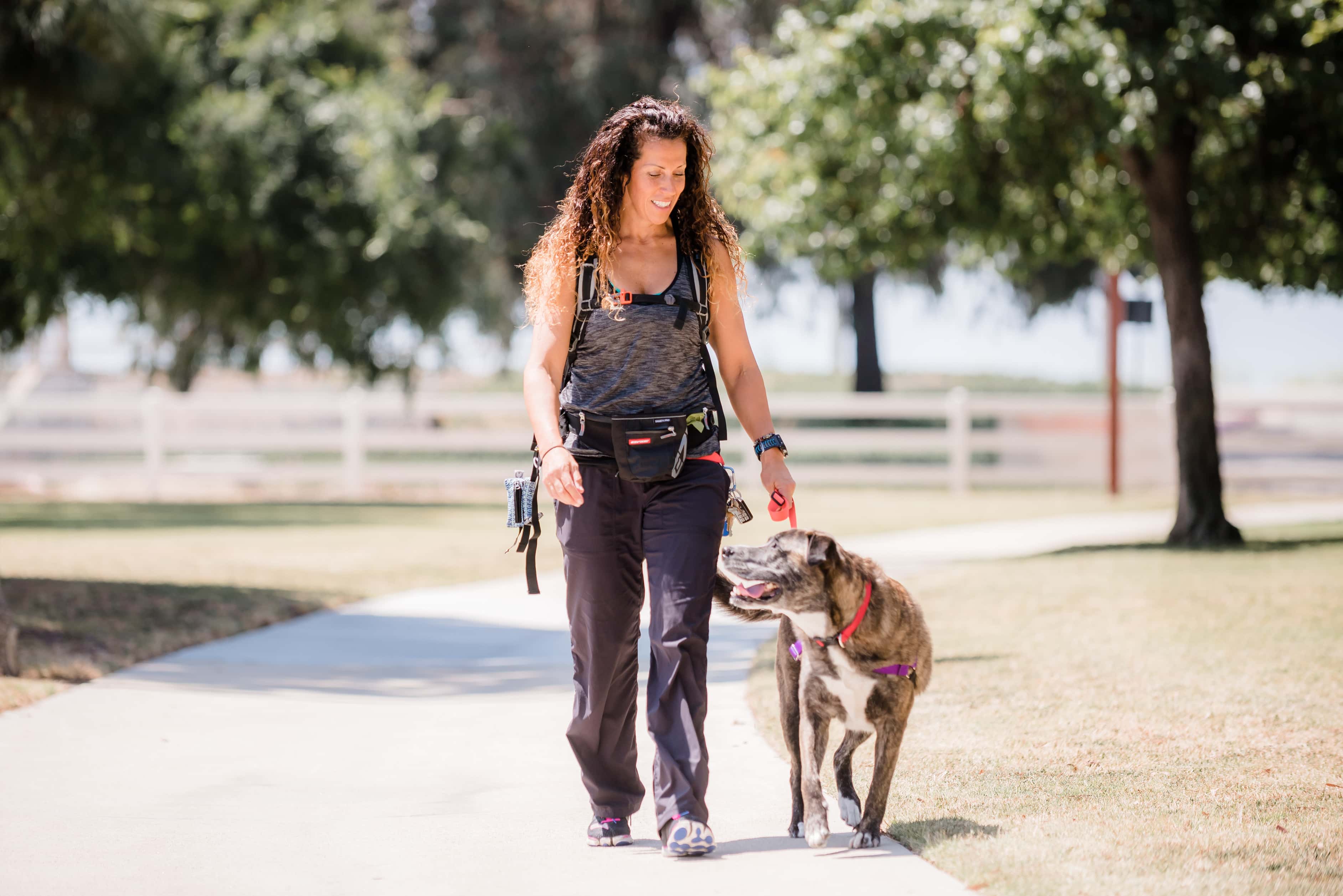To train your dog to walk on a leash without pulling, place an enticing toy on the floor and let them try to reach it. When they pull on the leash, stop and call them back to you.
Reward them with access to the toy when they walk on a loose leash. This teaches them that pulling slows them down. This method helps train your dog to walk nicely on a leash without pulling.
Why Leash Walking Training Is Important
Leash walking training is important for teaching your dog to walk on a leash without pulling. To train your dog, start by placing an enticing toy on the floor and stop moving if your dog pulls towards it. This helps them learn to walk calmly without tugging.
Leash walking training is crucial for the well-being of both you and your dog. It provides numerous benefits, prevents behavior problems, and ensures safety and control during walks. Let’s delve into the details of why leash walking training is so important.
Benefits Of Leash Walking
Leash walking offers several advantages that contribute to the overall health and happiness of your dog. Some of these include:
- Promotes regular exercise, which is essential for maintaining your dog’s physical fitness and preventing weight-related issues.
- Allows for mental stimulation as your dog explores new scents, sights, and sounds in the environment.
- Enhances the bond between you and your dog, as you both engage in a shared activity and spend quality time together.
- Improves your dog’s socialization skills by encountering other people, dogs, and animals during walks.
- Helps in releasing excess energy, which can reduce the likelihood of destructive behavior at home.
Preventing Behavior Problems
Leash walking training plays a pivotal role in preventing and addressing various behavior problems that can arise in dogs. Dogs that are not properly trained to walk on a leash may exhibit:
- Pulling: Pulling on the leash can be not only uncomfortable for you but also dangerous for both you and your dog. Training your dog to walk calmly beside you prevents this behavior.
- Aggression: Dogs that have not undergone leash walking training may display aggression towards other dogs or individuals they encounter during walks. Proper training can alleviate this issue by teaching your dog appropriate social behavior.
- Reactivity: Leash-reactivity, such as excessive barking or lunging at other dogs or distractions, can be effectively managed through leash walking training.
Safety And Control
One of the most crucial aspects of leash walking training is ensuring the safety and control of your dog during walks. When your dog is properly trained to walk on a leash:
- You have a greater ability to steer your dog away from potential hazards, including traffic, toxic substances, or aggressive animals.
- There is a reduced risk of your dog running away, getting lost, or chasing after something that could lead to an accident.
- You can maintain control over your dog’s behavior, reinforcing commands and boundaries, which fosters a sense of trust and reliability.
By focusing on leash walking training, you can provide your dog with the necessary skills and discipline to enjoy safe and enjoyable walks while strengthening your relationship. Stay tuned for our upcoming blog posts on how to train your dog to walk on a leash effectively.

Credit: caninelearningacademy.com
Techniques For Leash Training
Leash training is an essential skill for every dog owner to ensure that walks are enjoyable and safe for both the dog and the owner. With the right techniques, you can teach your dog to walk politely on a leash without pulling or becoming unruly. Here are some effective techniques that can help you achieve leash training success:
Using Positive Reinforcement
Positive reinforcement is a powerful tool in leash training as it motivates your dog to behave well on the leash. By rewarding your dog with treats, praise, or play whenever they walk beside you without pulling, you encourage them to continue this desirable behavior. Use a clicker or a verbal cue like “Yes!” to signal to your dog that they are doing the right thing, followed by a reward. Consistency and patience are key when using positive reinforcement to train your dog on a leash.
Introducing Distractions
Dogs are easily distracted, so it’s essential to train them to walk calmly on a leash even in the presence of distractions. Start by gradually exposing your dog to various distractions such as other dogs, people, or interesting smells. Begin in a quiet environment and gradually increase the level of distraction as your dog becomes more comfortable. Whenever your dog remains focused on you and walks politely, reward them with treats and praise. This helps your dog learn to ignore distractions and stay focused on you during walks.
Training In Different Environments
It’s crucial to practice leash training in various environments to ensure that your dog can walk politely on a leash regardless of the surroundings. Start in a familiar and quiet area, such as your backyard, and gradually progress to more challenging environments like parks or busy streets. Exposing your dog to different settings helps them generalize their leash training skills and remain well-behaved in any situation. Remember to reward your dog for good behavior consistently, regardless of the environment.
Troubleshooting Common Issues
Training your dog to walk on a leash can be a challenging process, especially when dealing with common issues that may arise. By identifying these issues and implementing the right strategies, you can ensure a successful leash training experience. In this section, we will discuss the common issues that dog owners face while leash training their furry friends and provide effective solutions for each one.
Dealing With Pulling
Pulling on the leash is one of the most common issues dog owners face while walking their pets. It can make the walk uncomfortable for both you and your dog, and may even cause injury. To address this issue:
- Start by training your dog to walk on a loose leash indoors or in a distraction-free environment.
- Use positive reinforcement techniques, such as rewards and praise, whenever your dog walks calmly without pulling.
- Consider using a front-clip harness or a head halter to minimize pulling and gain better control over your dog.
- Practice abrupt changes in direction whenever your dog starts pulling. This will teach them to pay attention to your movements and discourage pulling.
Teaching Loose Leash Walking
Teaching your dog to walk on a loose leash is essential for a pleasant and safe experience. Follow these steps to train your dog to walk calmly by your side:
- Start by walking in a quiet and familiar area with minimal distractions.
- Use a treat or a toy to keep your dog’s attention focused on you as you walk.
- Keep the leash loose and encourage your dog to walk by your side using verbal cues like “heel” or “walk.”
- Offer rewards and praise whenever your dog walks by your side without pulling or straying.
- Gradually increase the difficulty level by introducing more distractions and practicing in different environments.
Choosing The Right Leash And Equipment
The leash and equipment you choose for leash training play a crucial role in your dog’s comfort and your control over them. Consider the following factors when selecting the right leash and equipment:
- Choose a leash that is appropriate for your dog’s size and strength, ensuring it is neither too long nor too short.
- Opt for a leash made of durable material, such as nylon or leather, to withstand your dog’s pulling and chewing.
- For better control and to discourage pulling, consider using a front-clip harness or a head halter.
- Ensure that the equipment fits your dog properly and does not cause discomfort or chafing.
By addressing the common issues of pulling, teaching loose leash walking, and choosing the right leash and equipment, you can make leash training a positive and enjoyable experience for both you and your furry friend. Remember to be patient, consistent, and always use positive reinforcement techniques to encourage good behavior. With time and practice, your dog will become a master at walking on a leash!

Credit: caninelearningacademy.com

Credit: ontariospca.ca
Frequently Asked Questions Of How To Train My Dog To Walk On A Leash
How Do I Train My Dog To Walk On A Leash Without Pulling?
To train your dog to walk on a leash without pulling, place a desired object on the floor and call your dog towards you if they pull. Reward them with the object when they walk on a loose lead. This teaches them that pulling slows things down.
RSPCA suggests this method to train your dog to walk nicely on the lead.
How Do I Get My Dog To Stop Pulling On The Leash?
To stop your dog from pulling on the leash, place a desired object on the floor and call them towards you if they pull. This teaches them that pulling slows things down. For more tips and training, watch the video “How to train your dog to walk nicely on the lead” by the RSPCA.
How Do You Train Your Dog To Walk Beside You With A Leash?
To train your dog to walk beside you on a leash, start by placing something they want, like a toy, on the floor. If they pull towards it, stop and call them to you. Reward them with access to the toy for walking on a loose lead.
This teaches them that pulling slows things down.
What Is The Fastest Way To Leash Train A Dog?
To leash train your dog quickly, place a tempting toy on the floor. If your dog pulls towards it, stop and call them towards you. The reward for walking calmly is getting to play with the toy. This teaches them that pulling slows things down.
Conclusion
Training your dog to walk on a leash without pulling is essential for a enjoyable and safe experience. By consistently reinforcing positive behaviors and using treats as rewards, you can teach your dog to walk calmly beside you. Remember to start training inside the house and gradually progress to more distracting environments like the backyard or the park.
With patience and consistency, your dog will learn to walk nicely on a leash, making your walks together more enjoyable. Happy walking!



